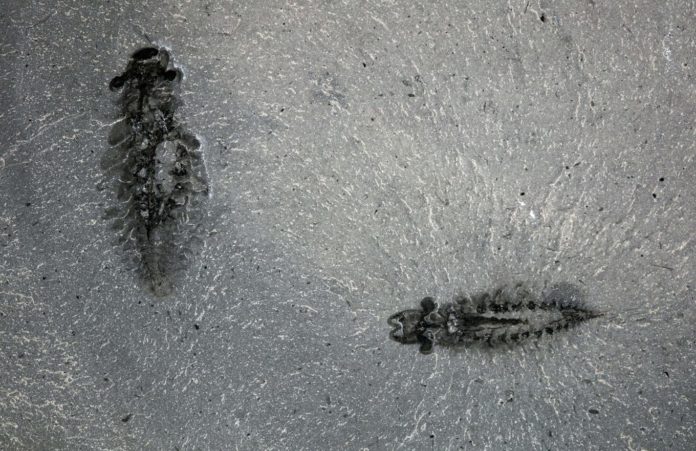500-million-year-old fossilized brains of stanleycaris prompt a rethink of the evolution of insects and spiders
The Royal Ontario Museum (ROM) released new findings based on a cache of fossils that contain the brain and nervous system of a half-billion-year-old marine predator called Stanleycaris.
Stanleycaris belongs to an extinct branch of the arthropod evolutionary tree known as Radiodonta, which was distantly related to current insects and spiders. These results show how the brains, eyes, and heads of arthropods have changed over time.
The findings were published in the Current Biology today.
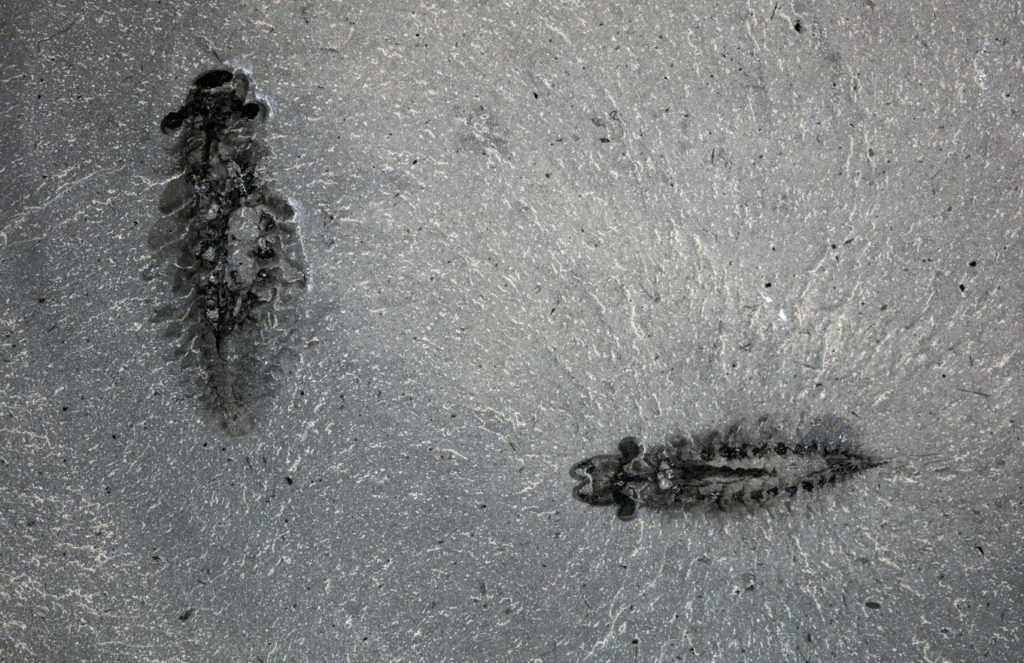
The part that excites the researchers the most is what’s going on inside Stanleycaris’ skull. After 506 million years, the brain and nerves are still surviving in 84 of the fossils.
Although fossilized brains from the Cambrian Period are not an unique discovery, this one stands out due to the astounding degree of preservation and the sheer quantity of specimens, according to lead researcher Joseph Moysiuk.
“We can even make out fine details such as visual processing centers serving the large eyes and traces of nerves entering the appendages. The details are so clear it’s as if we were looking at an animal that died yesterday”.
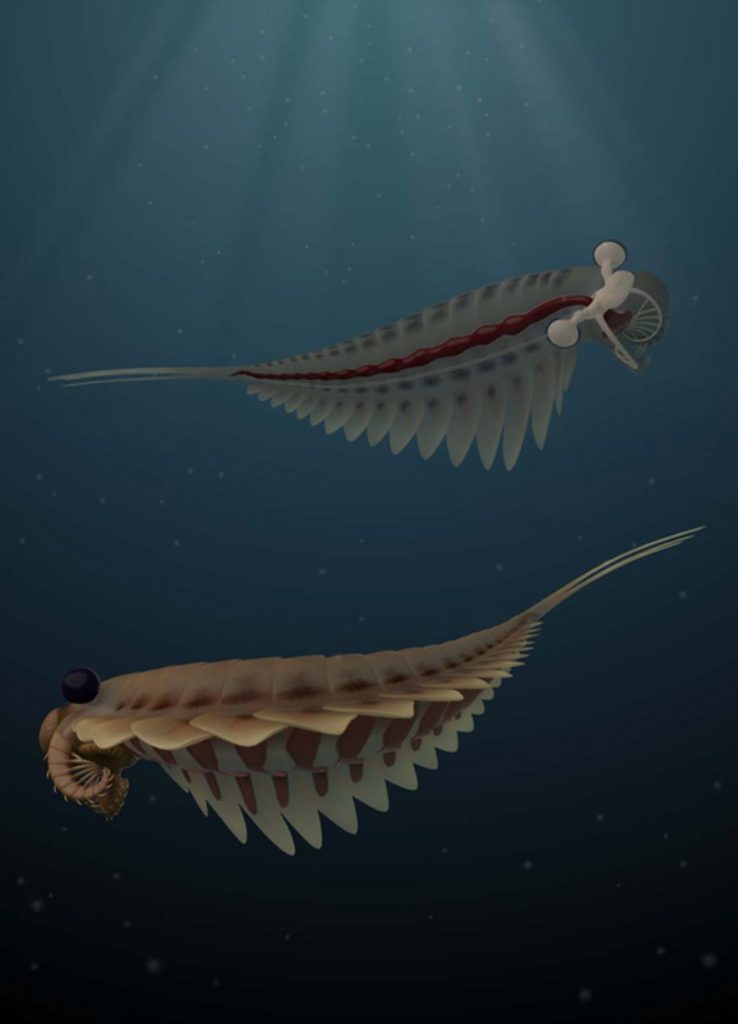
The newly discovered fossils demonstrate that Stanleycaris had a brain made up of two parts, the protocerebrum and deutocerebrum, related to the frontal claws and eyes, respectively.
“We conclude that a two-segmented head and brain has deep roots in the arthropod lineage and that its evolution likely preceded the three-segmented brain that characterizes all living members of this diverse animal phylum,” continued Moysiuk.
Today’s arthropods, such as insects, have three cerebral hemispheres: the protocerebrum, deutocerebrum, and tritocerebrum. While a segmental difference might not seem like a game-changer, it actually has far-reaching scientific ramifications.
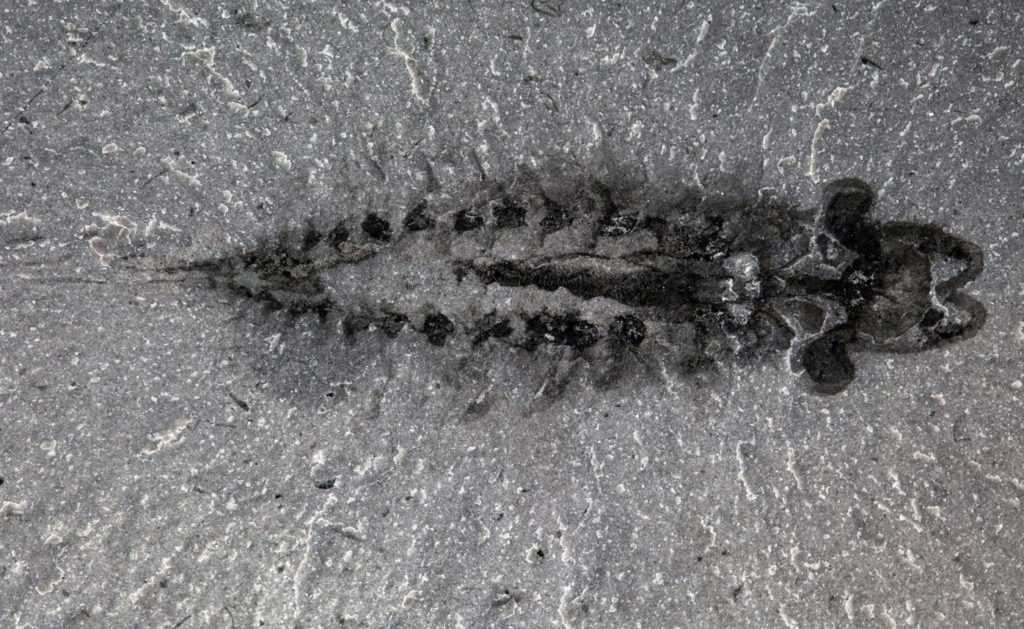
Because many arthropod organs have repeated copies in their segmented bodies, studying how segments line up between various species is important for understanding how these elements evolved across the group.
“These fossils are like a Rosetta Stone, helping to link traits in radiodonts and other early fossil arthropods with their counterparts in surviving groups.”
A characteristic never before seen in a radiodont, Stanleycaris had a huge center eye in addition to its pair of stalked eyes at the front of its head.
“The presence of a huge third eye in Stanleycaris was unexpected. It emphasizes that these animals were even more bizarre-looking than we thought, but also shows us that the earliest arthropods had already evolved a variety of complex visual systems like many of their modern kin,” according to Dr. Jean-Bernard Caron, the Richard Ivey Curator of Invertebrate Palaeontology at the Museum of Ontario and Moysiuk’s PhD advisor.
“Since most radiodonts are only known from scattered bits and pieces,” added Caron, “this discovery is a crucial jump forward in understanding what they looked like and how they lived.”
Radiodonts were among the largest animals of the Cambrian Period, with the legendary “weird wonder” Anomalocaris reaching at least 1 meter in length.
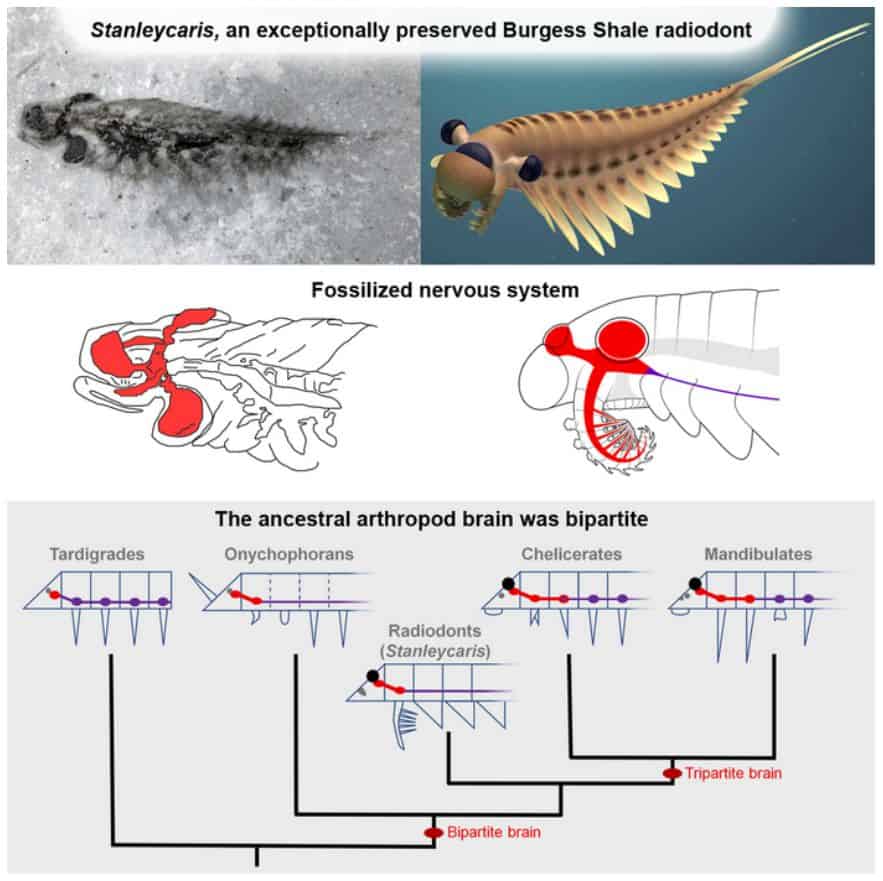
Even though Stanleycaris, which was only around 20 cm long, was small for its group at a time when most animals didn’t grow much larger than a human finger, it would have been a formidable predator.
Its highly developed neurological and sensory systems would have allowed Stanleycaris to quickly and effectively identify small prey in the darkness.
Any small bottom dweller unlucky enough to come into contact with Stanleycaris would have had nightmares thanks to its large compound eyes, intimidating-looking circular mouth lined with teeth, frontal claws with an impressive array of spines, and flexible, segmented body with a series of swimming flaps along its sides.
Image Credit: Art by Sabrina Cappelli © Royal Ontario Museum
You were reading: New Fossils Show how An Ancient Predator With Three Eyes Looked Like
